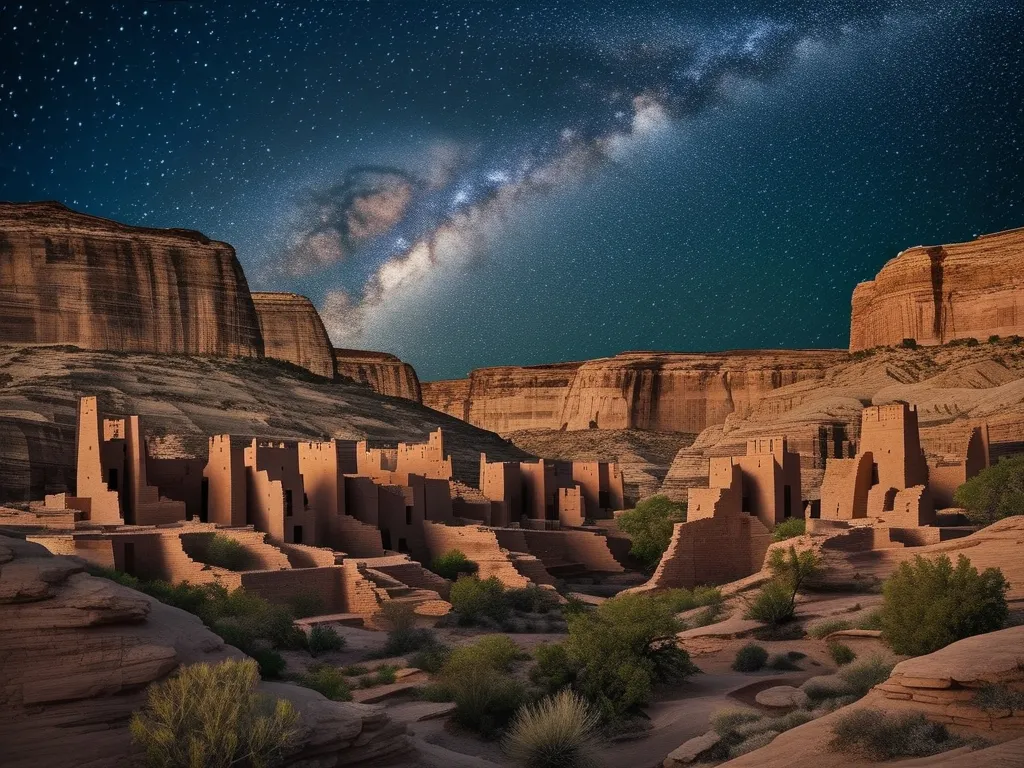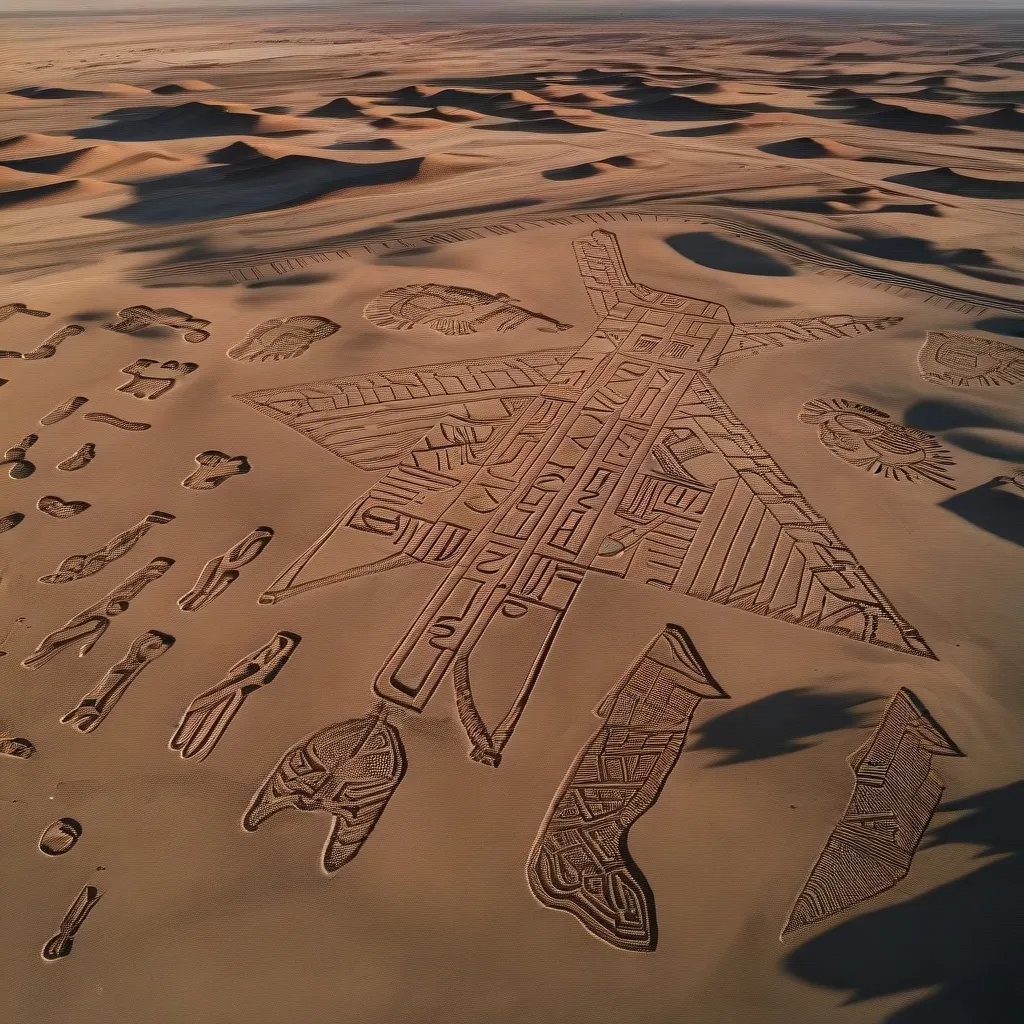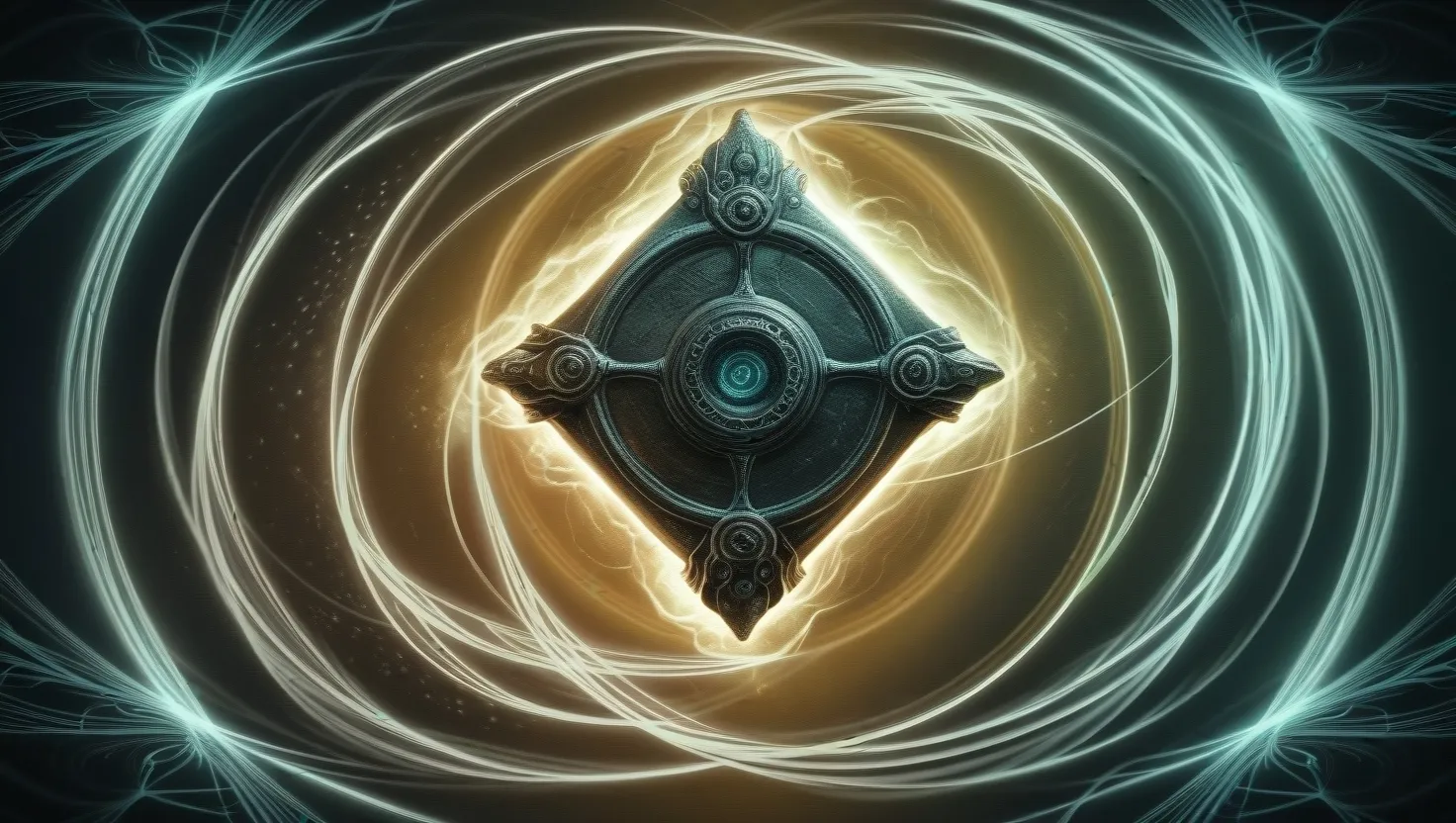The Anasazi: Unraveling the Mysteries of a Lost Civilization
Picture this: a vast desert landscape, dotted with towering mesas and deep canyons. Amidst this rugged terrain, the remnants of an ancient civilization stand as silent sentinels, guarding secrets of a people long gone. Welcome to the world of the Anasazi, also known as the Ancestral Puebloans.
These fascinating folks once called the Four Corners region of the United States home. That’s where Arizona, Utah, New Mexico, and Colorado all come together in a big ol’ desert party. And boy, did they know how to build! We’re talking elaborate stone structures that would make modern architects scratch their heads in wonder.
But here’s the kicker - they vanished. Poof! Gone like my motivation on a Monday morning. And that’s where our mystery begins.
Now, I don’t know about you, but I love a good mystery. And the Anasazi? They’ve left us with a doozy. Their sudden disappearance in the late 13th century has had historians and archaeologists scratching their heads for years. It’s like they all decided to ghost us at the same time.
Let’s start with what we do know. The Anasazi were pretty darn impressive. They built these incredible cliff dwellings that look like they’re defying gravity. Seriously, if you’ve ever been to Mesa Verde, you’ll know what I’m talking about. It’s like they looked at a sheer cliff face and thought, “Yeah, that looks like prime real estate.”
And it wasn’t just their architectural skills that were on point. These guys had road networks that would put some modern cities to shame. We’re talking about roads up to nine meters wide and over 640 kilometers long. That’s some serious infrastructure for a pre-modern civilization.
But wait, there’s more! The Anasazi were also stargazers extraordinaire. They built these sophisticated astronomical observatories that could predict solstices and equinoxes. The Sun Dagger at Fajada Butte is a prime example. It’s like they had their own ancient version of NASA.
So, what happened to these master builders and celestial observers? Well, that’s where things get a bit murky.
One popular theory points to Mother Nature throwing a fit. Imagine this: you’re living your best life in your cool cliff dwelling, and then bam! A megadrought hits. We’re talking about a dry spell that lasted from 1276 to 1299. That’s 23 years of “Where’s the water at?” Now, try growing enough food to feed tens of thousands of people in those conditions. Not easy, right?
To make matters worse, it seems the Anasazi might have been a bit too enthusiastic with their logging. Deforestation and topsoil erosion likely added to their woes. It’s like they were playing a real-life version of Jenga with their environment, and eventually, the whole thing came tumbling down.
But hold on to your hats, folks, because the plot thickens. Environmental factors alone don’t explain everything. Archaeologists have uncovered some pretty grim evidence that suggests violence played a big role in the Anasazi’s downfall.
At sites like Castle Rock in Colorado, researchers have found signs of some seriously dark stuff. We’re talking dismemberment, torture, and even cannibalism. And the kicker? It seems like a lot of this violence was coming from within their own society. Talk about a civilization eating itself alive (pun very much intended).
Some researchers have even proposed a concept called “socialization for fear.” Apparently, after the 11th century, the Anasazi started living in a constant state of fear. Imagine entire villages turning against each other. It’s like a prehistoric version of that game “Among Us,” but with real, terrifying consequences.
And just when you thought it couldn’t get any more complicated, let’s throw some religious conflict into the mix. Archaeological evidence suggests that religious sections of pueblos were destroyed, hinting at some serious disagreements over spiritual matters. It’s like they had their own version of the Reformation, but with more property damage.
So, we’ve got environmental disasters, internal violence, and religious strife all swirling together in a perfect storm of societal collapse. But here’s the million-dollar question: where did they go?
Well, one theory suggests that many Anasazi migrated to the northern Rio Grande region of northwestern New Mexico. And get this - we’ve got DNA evidence to back it up. Not human DNA, mind you, but turkey DNA. Yep, you read that right. Turns out, the domesticated turkeys in the northern Rio Grande region after 1280 carried genetic material from the Anasazi’s turkeys. It’s like they packed up their birds and hit the road.
This theory aligns with the oral histories of modern Pueblo peoples. The Hopi, Zuni, and other Pueblo groups have stories passed down through generations that speak of a gradual exodus from places like Chaco and Mesa Verde. According to these tales, families and clans left over a period of about a hundred years. It wasn’t a mass exodus, but more of a slow trickle.
Now, let’s take a moment to appreciate the scale of what the Anasazi left behind. Their cliff dwellings weren’t just homes; they were entire communities. Some of these structures had up to 700 rooms. That’s not a house; that’s a vertical town!
And remember those roads I mentioned earlier? They weren’t just for show. These highways facilitated trade and partnerships with neighboring groups. The Anasazi weren’t isolationists; they were networkers.
As for their astronomical observatories, like the Sun Dagger, they show a deep understanding of celestial movements. It’s mind-boggling to think about the knowledge and patience required to create such precise instruments using nothing but stone and sunlight.
The story of the Anasazi is more than just a historical curiosity. It’s a cautionary tale that resonates even today. Their disappearance reminds us that even the most advanced and resilient civilizations can be vulnerable to environmental changes and social upheaval.
Think about it. Here was a civilization that had mastered its environment, built incredible structures, and developed sophisticated astronomical knowledge. Yet, they couldn’t withstand the combined pressures of climate change, resource depletion, and social conflict. Sound familiar?
As we face our own environmental challenges and social divisions, the story of the Anasazi serves as a stark reminder of what can happen when we fail to live in harmony with our environment and each other.
But it’s not all doom and gloom. The legacy of the Anasazi lives on. Their descendants, the modern Pueblo peoples, continue to maintain many of the traditions and cultural practices of their ancestors. The story of the Anasazi didn’t end with their disappearance; it evolved.
In fact, the very mystery surrounding the Anasazi has helped to keep their memory alive. Each new archaeological discovery, each new theory about their disappearance, reignites interest in this ancient civilization. In a way, the Anasazi continue to captivate our imaginations and challenge our understanding of history.
As we stand among the ruins of their civilization, we’re not just looking at old stones and pottery shards. We’re looking at the remnants of dreams, ambitions, and an entire way of life. We’re seeing the product of countless generations of knowledge, passed down and refined over centuries.
The silent canyons and empty cliff dwellings speak volumes about human ingenuity, resilience, and the complex relationship between people and their environment. They remind us that civilizations, no matter how advanced, are not invincible. They require constant care, adaptation, and a deep respect for the natural world.
So, the next time you find yourself standing before an ancient ruin or holding a piece of pottery from a long-gone civilization, take a moment to reflect. These aren’t just artifacts; they’re messages from the past. They’re reminders of our shared human history and the cyclical nature of civilizations.
The mystery of the Anasazi may never be fully solved, and perhaps that’s okay. Sometimes, the questions are just as valuable as the answers. They keep us curious, keep us searching, and most importantly, keep us learning from the past.
In the end, the story of the Anasazi is our story too. It’s a tale of human ambition, innovation, struggle, and resilience. It’s a reminder that our actions today will echo through time, just as theirs have. And who knows? Maybe a thousand years from now, future archaeologists will be puzzling over our civilization, trying to understand why we made the choices we did.
So, let’s take a leaf out of the Anasazi book. Let’s build, create, and reach for the stars. But let’s also remember to live in harmony with our environment and each other. After all, that’s the best way to ensure our own civilization doesn’t become the next great archaeological mystery.






